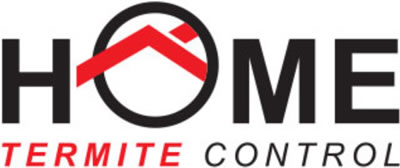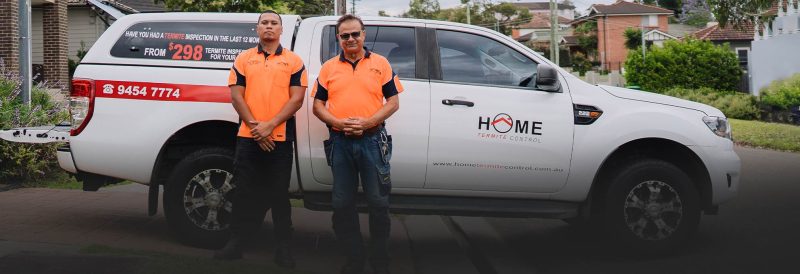Did you know that termites cause billions of dollars in damage each year? As a homeowner, you must be well-informed about termite inspections and treatments to protect your valuable investment. In this blog post, we will guide you through the importance of termite inspection, identifying termites and their activity, termite damage and risks, termite treatment options, and hiring a professional termite inspector. By the end, you will be well-equipped to prevent infestations and structural damage to your home.
Key Takeaways
- Understand the importance of professional termite inspections and their frequency.
- Identify common species, signs of damage, and preventive measures to reduce risk.
- Hire a qualified inspector with credentials & experience for accurate detection & treatment recommendations.
Understanding Termite Inspections
Homeowners need to comprehend termite inspections to prevent infestations and structural damage. Regular examinations by a certified timber pest inspector can help identify termite activity and conditions that may be conducive to termite activity.
A thorough termite inspection includes the interior and exterior of your building, accessible roof cavities, subfloor areas, and any visible signs of termite attack or damage.
Types of Inspections
There are various types of termite inspections, such as comprehensive timber pest and termite inspections, essential home inspections, and regular professional pest inspections.
A certified pest inspector conducts comprehensive inspections, offering a detailed assessment of your property to detect any present or potential timber pest and termite activity, with a professional termite inspection carried out to ensure accuracy. To further safeguard your property, a timber pest inspection is highly recommended.
Conversely, essential home inspections involve a qualified home inspector visually inspecting your property, focusing on identifying present or possible timber pests and termite activity.
Typically, a qualified pest inspector carries out regular professional pest inspections. These periodic checks detect any current or potential timber pests and termite activity.
Inspection Frequency
Variables such as location, construction type, and history determine the frequency of termite inspections, although most pest control companies suggest conducting them annually. Regular reviews are essential to detect and prevent any infestations and associated damage.
Keeping up with termite inspections can help avoid expensive repairs and uphold your home’s structural integrity.
Identifying Termites and Their Activity
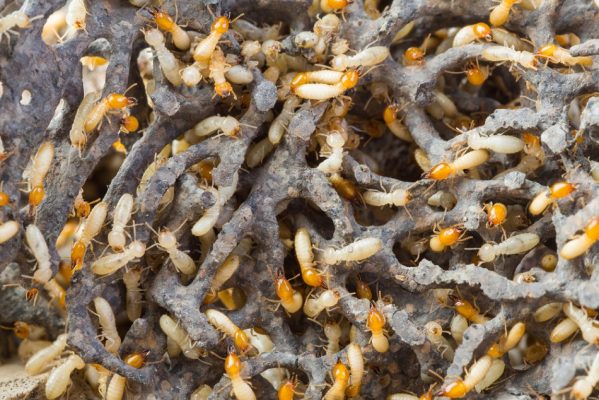
Recognizing termites and their activity is critical to early detection and treatment. Termites come in various species, each with their unique behaviours and characteristics. Knowing the common termite species and their behaviours can help you recognize an infestation early and take appropriate action to protect your home.
Subterranean Termites
Subterranean termites are the most destructive species and build their colonies underground with elaborate tunnels and chambers. Their diet consists of cellulose-containing materials such as:
- timber
- wood
- paper
- cardboard
- plant roots
Subterranean termites build mud tubes to reach their food sources and have three primary castes within their termite colony: reproductives (king, queen, alates), workers, and soldiers.
Detecting and treating subterranean termites early on is vital to prevent substantial damage to your home.
Drywood Termites
Drywood termites infest dry wood and do not require contact with soil. These termites produce distinctive fecal pellets, which are small, complex, and cylindrical.
The damage caused by drywood termites can significantly affect wood structures, furniture, and other wooden items. Correctly identifying and treating drywood termites can shield your home from expensive damage.
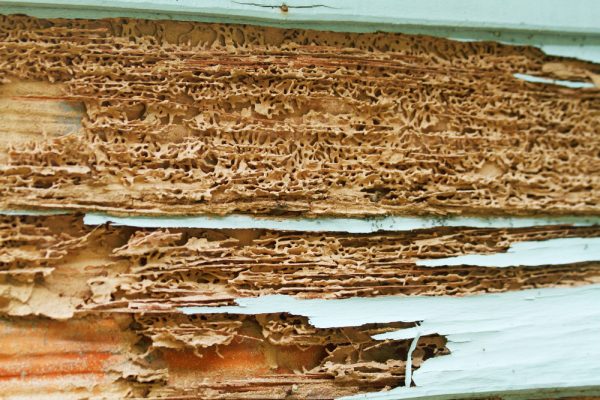
Termite Damage and Risks
Termites can cause severe and costly damage to your home due to termite infestation. Termites are responsible for more property damage than fires, storms, and floods, making termite infestations a serious concern for homeowners.
Recognizing the signs of termite activity and implementing preventative measures are vital steps in minimizing the risk of termite damage.
Signs of Termite Damage
Signs of termite damage include:
- Mud tubes: small tunnels composed of soil and saliva, which termites utilize to traverse between their nest and food sources
- Wood that has a hollow sound when tapped
- Discarded wings
Hollow-sounding wood indicates termite activity, as termites eat away at the wood from the inside. Discarded wings signify termites having swarmed and seeking a new nesting site.
Detecting these signs early can aid in preventing your home from significant damage.
Preventative Measures
Preventive measures should be taken to reduce the risk of termites infesting your home. These include:
- Mitigating moisture around the property by investigating for any water leaks
- Addressing drainage issues
- Deploying dehumidifiers
- Sealing any cracks or crevices in the foundation
- Caulking around windows and doors
- Inspecting for any other potential entry points
These measures can help with termite protection, keeping termites at bay.
Furthermore, it’s vital to maintain a termite-free perimeter around your property. This can be achieved by removing dead wood, mulch, and other organic materials and conducting regular inspections for any signs of termite activity.
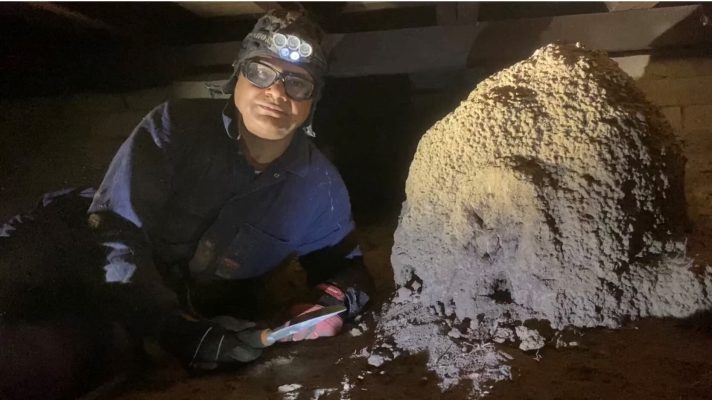
Termite Treatment Options
Various termite treatment options are available to deal with an infestation, each with its effectiveness and cost.
This section will discuss chemical barriers, baiting systems, and physical barriers as potential treatment options for termite control.
Chemical Barriers
Chemical barriers involve applying termiticides to create a continuous barrier that kills or deters termites. Termiticides are injected into the soil surrounding the foundation of a building, creating a constant obstacle that kills or prevents termites from entering.
Chemical barriers, with their proven effectiveness in eliminating or discouraging termites, can offer long-term protection. However, chemical barriers may be toxic to humans and animals and can potentially contaminate groundwater.
Baiting Systems
Baiting systems, a termite management system, use strategically placed bait stations containing termiticides to collapse termite colonies. The termites consume the bait and transport it back to their nest, effectively eradicating the colony.
While baiting systems can serve as an effective and environmentally friendly option for termite control, they may not be suitable for all circumstances. They should not be the only method relied on for termite management.
Physical Barriers
Physical barriers are structures that are implemented to restrict termites from gaining access to a building. These barriers prevent termites from entering concealed areas and force them out in the open, making their detection easier. Some physical barriers include:
- Granitgard
- Termite membranes/collars
- Metal ant capping
- Termimesh
- JH Termite Barrier
In some areas, physical barriers are mandated by law for new buildings, ensuring a higher level of protection against termites.
Hiring a Professional Termite Inspector
Hiring a professional termite inspector ensures accurate detection and treatment recommendations for your property. A professional inspector will have the credentials, experience, and tools to detect termite activity and provide expert advice on the best action.
Credentials and Experience
When seeking a professional termite inspector, ensure they have the following qualifications:
- Licensed and insured
- Proven track record
- Positive customer reviews
- Minimum of two years of relevant industry experience
- Technical qualifications
- Termite license or certification
Membership in a professional association, such as the Australian Environmental Pest Managers Association (AEPMA), is also highly recommended.
Inspection Reports
A detailed inspection report forms an integral part of a professional termite inspection. The information should outline the inspection findings, including any evidence of termite activity and recommendations for subsequent actions.
A comprehensive report also provides information on the areas inspected, any conducive conditions that may attract termites and any necessary follow-up actions. Having a detailed inspection report lets you decide on the best course of action to protect your home from termite damage.
Summary
In conclusion, understanding termite inspections, identifying termites and their activity, recognizing termite damage, implementing preventative measures, and utilizing appropriate treatment options are all essential to protecting your home from termite infestations and structural damage. Hiring a professional termite inspector with proper credentials and experience can ensure the accurate detection and treatment of any termite activity on your property.
Remember, termites can cause billions of dollars in damage each year. Don’t let your home become another statistic. Stay vigilant and proactive in your termite management to safeguard your valuable investment.
Frequently Asked Questions
How much does a termite inspection cost Sydney?
A termite inspection in Sydney typically costs between $298 and $500, depending on your home’s size and the review’s extent. This cost covers the time spent by the technician on site and writing the report.
Treatment fees may be separate and are usually determined after an initial inspection.
How do you know if you have termites in your house in Australia?
If you suspect termites may be in your home, look for mud trails on the exterior walls of your home, dark stains on your walls, flying termites, deterioration of timber, unusual clicking sounds coming from the walls, papery or hollow sounding timber, tight-fitting doors, and hard-to-open windows, tunnels in wood, and frass (termite droppings).
For the safest answer, hire a professional termite inspection.
What do Aussie termites look like?
Aussie termites are usually white or light brown and can be mistaken for ants due to their size of around 0.7 mm – 1 cm in length. They have unsegmented bodies and beaded antennae and can vary in colour and appearance according to their species.
Termites are social insects that live in colonies and are divided into three castes: workers, soldiers, and reproductives. Workers are responsible for gathering food, maintaining the nest, and caring for the young. Soldiers protect the colony from predators and other threats.
